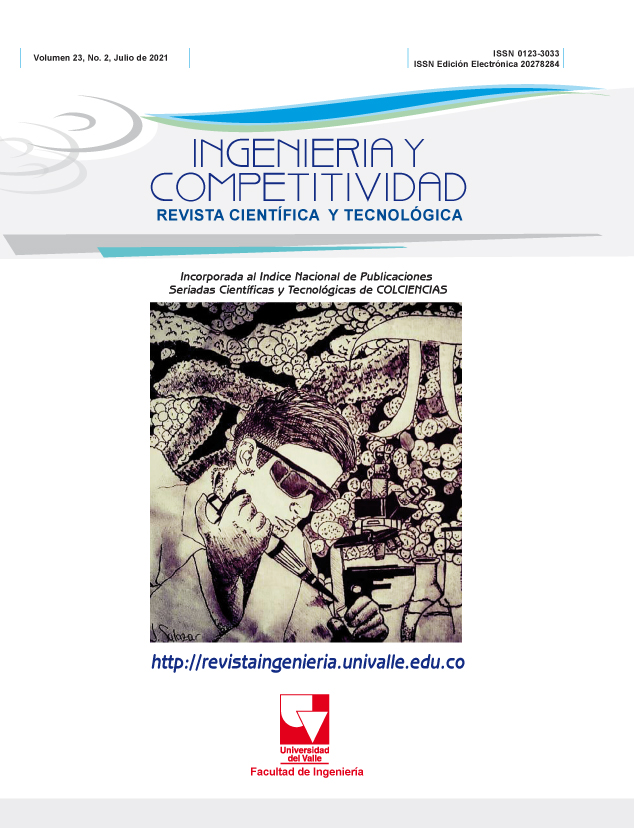Banco Caja Social: un caso práctico de transformación digital para servir a los mercados populares
Contenido principal del artículo
Este trabajo presenta el Proyecto de investigación e innovación tecnológica realizado por el “Banco Caja Social, en relación con su propio proceso de transformación digital. Dicho proyecto fue calificado por Colciencias como un “Proyecto de Innovación”, en la resolución 1728 de 2018. El artículo documenta la metodología aplicada en el proyecto “Ruta Transformadora” y los resultados obtenidos hasta el momento. La metodología parte de definiciones estratégicas en cada uno de los objetivos específicos planteados por el Banco. En primer lugar, se hizo un diagnóstico inicial de cada uno de los objetivos, analizando el sector Bancario a nivel Nacional, y haciendo una revisión bibliográfica del estado de la Banca en la actualidad. Posteriormente, se plantearon las características, implementaciones y decisiones a tomar, con el fin de replantear el Modelo Operativo de la institución, alineándolas con el propósito último de la organización que es Servir a los mercados misionales. Así, el planteamiento de dicho modelo permite el acceso e inclusión a propuestas de valor financieras que sean relevantes y pertinentes para los sectores populares. Se logró identificar la importancia de implementar una Estrategia Multicanal para poder cumplir con el Objetivo general del “Banco Caja Social”. Se concluyó que las TI del Banco, basado en su modelo operativo, deben enfocarse en los siguientes aspectos: potencializar capacidades de gestión de clientes, automatizar procesos de negocios, y promover la incorporación de una Estrategia de gestión multicanal. El avance del proyecto se encuentra en la actualidad en un 62%.
- Banco Caja Social
- Estrategia Multicanal
- Transformación Digital
- Optimización de Canales
- Modelo Operativo
(1) Fundación Grupo Social - Una semilla de cambio [Internet]. Fundaciongruposocial.co. 2019 [cited 2020 Oct. 9]. Available from:https://www.fundaciongruposocial.co/public/
(2) Banco Caja Social [Internet]. Bancocajasocial.com. 2018 [cited 2020 Ago. 16]. Available from: https://www.bancocajasocial.com/portalserver/bcs-public/inicio?gclid=CjwKCAjwps75BRAcEiwAEiACMThskzJw7q1zz8SRhYhS8WQY_8Ci2Er2fM4jcNUDqJvD9FBs8aYfeBoC2vkQAvD_BwE.
(3) Mckinsey & Company. Apoyando al Banco Caja Social en la definición y ejecución de su arquitectura de canales - Iniciativa Migración de Transacciones. De próxima aparición 2014.
(4) Bulgărea C. The evolution and the future role of the branch in distribution of the Banking products and services. Annals of the University of Petroşani, Economics. 2011;11(3):15-22.
(5) Gurǎu C. ICT strategies for development: Implementing multichannel Banking in Romania. Information Technology for Development. 2005;11(4):343-362. https://doi.org/10.1002/itdj.20024.
(6) Lipton A, Shrier D, Pentland A. Digital Banking Manifesto: The End of Banks? [Internet]. USA: Massachusetts Institute of Technology; 2016 [cited 2020 Ago 16]. Available from: https://www.getsmarter.com/blog/wp-content/uploads/2017/07/mit_digital_Bank_manifesto_report.pdf.
(7) PwC. Retail Banking 2020 Evolution or Revolution?. [Internet]. 2014 [cited 2020 ago 16];. Available from: https://www.pwc.es/es/publicaciones/financiero-seguros/banca-retail-2020.html.
(8) Galdo-Souto M. Multicanalidad y digitalización bancaria: Innovación y tendencias. [Master’s Thesis]. Madrid: Comillas Pontificial University; 2015. 45p.
(9) Rao Y, Budde S. Banking Technology Innovations in India: Enhancing Customer Value and Satisfaction. Indian Journal of Science and Technology. 2015;8(33).https://dx.doi.org/10.17485/ijst/2015/v8i33/78280.
(10) Dallerup K, Delzi F, Grunberger E, Lasa AN, Taraporevala Z. The future of customer-led retail Banking distribution [Internet]. USA: McKinsey & Company; 2017 [cited 2020 ago 16]. Available from: https://www.mckinsey.com/industries/financial-services/our-insights/the-future-of-customer-led-retail-Banking-distribution#.
(11) Calisir F, Gumussoy C. Internet Banking versus other Banking channels: Young consumers’ view. International Journal of Information Management. 2008;28(3):215-221. https://doi.org/10.1016/j.ijinfomgt.2008.02.009
(12) Hoehle H, Scornavacca E, Huff S. Three decades of research on consumer adoption and utilization of electronic Banking channels: A literature analysis. Decision Support Systems. 2012;54(1):122-132. https://doi.org/10.1016/j.dss.2012.04.010.
(13) Mikhaylov A, Petrov N. Features of Digital Transformation of Modern Banking Transactions. In: Ashmarina S, Mantulenko V, editors. Current Achievements, Challenges and Digital Chances of Knowledge Based Economy Lecture Notes in Networks and Systems, vol 133. Springer; 2021. p. 673–81.Available from: https://doi.org/10.1007/978-3-030-47458-4_77.
(14) Aldás Manzano J, Lassala Navarré C, Ruiz Mafé C, Sanz Blas S. Análisis de los factores determinantes de la lealtad hacia los servicios bancarios online. Cuadernos de Economía y Dirección de la Empresa. 2011;14(1):26-39. https://doi.org/10.1016/j.cede.2011.01.003.
(15) Bulgărea C. Distribution of Banking products and services. Annals of the University of Oradea, Economic Science Series. 2010;1(2):1086-90.
(16) Olsen T, Judah M, Fielding J, Nielsen N, Phillips S. New Bank Strategies Require New Operating Models. Bain & Company; 2017 [cited 2020 ago 17]. Available from: https://www.bain.com/insights/new-Bank-strategies-require-new-operating-models.
(17) Dietz M, Härle P, Khanna S. A digital crack in Banking’s business model. McKinsey Quarterly. 2016 [cited 2020 ago 1]. Available from: https://www.mckinsey.com/industries/financial-services/our-insights/A-digital-crack-in-Bankings-business-model# .
(18) Villanova University. BPM and Banking [Internet]. Villanovau.com. 2018 [citado 17 Ago 2020]. Available from: https://www.villanovau.com/resources/bpm/what-is-bpm/
(19) Colciencias. Resolución No. 1728 de 2018. Bogotá; 2018.
(20) Superintendencia Financiera de Colombia. Informe de Operaciones Segundo Semestre 2019; 2020.
(21) Min H. A model-based decision support system for locating Banks. Information & Management. 1989;17(4):207-215. https://doi.org/10.1016/0378-7206(89)90044-X.
Descargas

Esta obra está bajo una licencia internacional Creative Commons Atribución-NoComercial-CompartirIgual 4.0.
Los autores que publican en esta revista están de acuerdo con los siguientes términos:
Los autores ceden los derechos patrimoniales a la revista y a la Universidad del Valle sobre los manuscritos aceptados, pero podrán hacer los reusos que consideren pertinentes por motivos profesionales, educativos, académicos o científicos, de acuerdo con los términos de la licencia que otorga la revista a todos sus artículos.
Los artículos serán publicados bajo la licencia Creative Commons 4.0 BY-NC-SA (de atribución, no comercial, sin obras derivadas).





